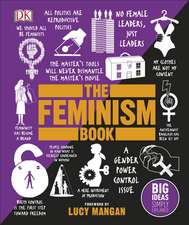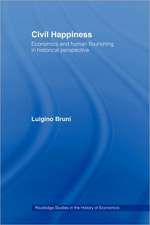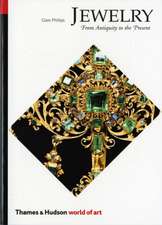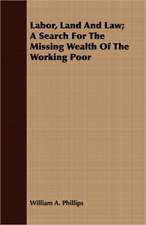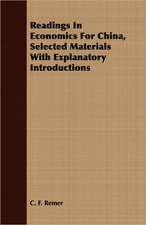A History of Money: Fourth Edition
Autor Glyn Davies Editat de Duncan Connorsen Limba Engleză Paperback – 15 iul 2016
A History of Money is exactly that—a look at how money, the indispensable unit of our economy, developed through time. Starting with the barter system, the authors describe how the basic function of exchanging goods evolved into a monetary system based on coins made of precious metals and how, from the 1500s onwards, financial systems were established and currency became intertwined with commerce and trade, finally settling by the mid-1800s into a stable system based on gold. Rather than approaching money as a theory, the authors show how usage developed pragmatically over time to suit the economic needs of society; and they make a surprising yet compelling argument for the inherent stability of the gold standard.
Preț: 320.41 lei
Nou
Puncte Express: 481
Preț estimativ în valută:
61.31€ • 64.01$ • 50.74£
61.31€ • 64.01$ • 50.74£
Carte disponibilă
Livrare economică 14-28 martie
Livrare express 27 februarie-05 martie pentru 65.44 lei
Preluare comenzi: 021 569.72.76
Specificații
ISBN-13: 9781783163090
ISBN-10: 1783163097
Pagini: 800
Ilustrații: 4 graphs, 36 tables
Dimensiuni: 152 x 229 x 48 mm
Greutate: 1.31 kg
Ediția:Nouă
Editura: University of Wales Press
Colecția University of Wales Press
ISBN-10: 1783163097
Pagini: 800
Ilustrații: 4 graphs, 36 tables
Dimensiuni: 152 x 229 x 48 mm
Greutate: 1.31 kg
Ediția:Nouă
Editura: University of Wales Press
Colecția University of Wales Press
Notă biografică
Glyn Davies was emeritus professor of the University of Wales and formerly economic adviser to Julian Hodge Bank Limited, director of the Bank of Wales, and senior economic adviser to the secretary of state for Wales. Duncan Connors is a teaching fellow in finance at Durham University Business School, having taught at the universities of Cambridge, Coventry and Buckingham.
Cuprins
Foreword
Acknowledgements
Introduction
Contents
1) THE NATURE AND ORIGINS OF MONEY
AND BARTER
The importance of money
Sovereignty of monetary policy
Unprecedented inflation of population
Barter: as old as the hills
Persistence of gift exchange
Money: barter's disputed paternity
Modern barter and counrertrading
Modern retail barter
Primitive money: definitions and early development
Economic origins and functions
The quality-to-quantity pendulum: a metatheory of money
2) FROM PRIMITIVE AND ANCIENT MONEY
TO THE INVENTION OF COINAGE, 3000–600 ac
Pre-metallic money
The ubiquitous cowrie
Fijian whales' teeth and Yap stones
Wampum: the favourite American-Indian money
Cattle: man's first working-capital asset
Pre-coinage metallic money
Money and banking in Mesopotamia
Girobanking in early Egypt
Coin and cash in early China
Coinage and the change from primitive to modern economies 60 Henry VI
The invention of coinage in Lydia and Ionian Greece
3) THE DEVELOPMENT OF GREEK AND ROMAN MONEY, 600 sc-AD 410
The widening circulation of coins
Laurion silver and Athenian coinage
Greek and metic private bankers
The Attic money standard
Banking in Delos
Macedonian money and hegemony
The financial consequences of Alexander the Great
Money and the rise of Rome
Roman finance, Augustus to Aurelian, 14 BC–AD 275
Diocletian and the world's first budget, 284–305
Finance from Constantine to the Fall of Rome
The nature of Graeco-Roman monetary expansion
4) THE PENNY AND THE POUND IN MEDIEVAL EUROPEAN MONEY,410–1485
Early Celtic coinage
Money in the Dark Ages: its disappearance and re-emergence
The Canterbury, Sutton Hoo and Crondall finds
From sceattas and stycas to Offa's silver penny
The Vikings and Anglo-Saxon rccoinage cycles, 789–978
Danegeld and heregeld, 978–1066
The Norman Conquest and the Domesday Survey, 1066–1087
The pound sterling to 1272
Touchstones and trials of the Pyx
The Treasury and the tally
The Crusades: financial and fiscal effects
The Black Death and the Hundred Years War
Poll taxes and the Peasants' Revolt
Money and credit at the end of the Middle Ages
5) THE EXPANSION OF TRADE AND FINANCE,
1485–1640
What was new in the new era?
Priming: a new alternative to minting
The rise and fall of the world's first paper money
Bullion's dearth and plenty
Potosi and the silver flood
Henry VII: fiscal strength and sound money, 1485–1509
The dissolution of the monasteries
The Great Debasement
Recoinage and after: Gresham's Law in action, 1560–1640
The so-called price revolution of 1540-1640
Usury: a just price for money
Bullionism and the quantity theory of money
Banking still foreign to Britain?
6 ) THE BIRTH AND EARLY GROWTH OF BRITISH BANKING, 1640–1789
Bank money supply first begins to exceed coinage
From the seizure of the mint to its mechanization, 1640–1672
From the great recoinage to the death of Newton, 1696–1727
The rise of the goldsmith-banker, 1633–1672
Tally-money and the Stop of the Exchequer
Foundation and early years of the Bank of England The national debt and the South Sea Bubble
Financial consequences of the Bubble Act
Financial developments in Scotland, 1695–1789
The money supply and the constitution
7 ) THE ASCENDANCY OF STERLING, 1789-1914
Gold versus paper ... finding a successful compromise
Country banking and the industrial revolution to 1826
Currency, the bullionists and the inconvertible pound,
1783–1826
The Bank of England and the joint-stock banks, 1826–1850
Amalgamation, limited liability and the end of unit banking
The rise of working-class financial institutions
The discount houses, the money market and the bill on London
The merchant banks, the capital market and overseas investment
The final triumph of the full gold standard, 1850–1914
Gold reserves, rallies and the constitution
8) BRITISH MONETARY DEVELOPMENT IN THE TWENTIETH CENTURY
Introduction: a century of extremes
Financing the First World War, 1914–1918
The abortive struggle for a new gold standard, 1918–1931
Cheap money in recovery, war and reconstruction, 1931–1951
Inflation and the integration of an expanding monetary system,1951–2000
The monetarist experiment, 1973-1990
EMU: the end of the pound sterling?
The 2008 financial crisis and the evolution of the banking system in the twenty-first century
9) AMERICAN MONETARY DEVELOPMENT SINCE 1700
Introduction: the economic basis of the dollar
Colonial money: the swing from dearth to excess, 1700–1775
The official dollar and the growth of banking up to
The Civil War, 1775–1861
From the Civil War to the founding of the 'Fed', 1861–1913
The banks through boom and slump, 1914–1944
Bretton Woods: vision and realization, 1944–1991
American banks abroad
From accord to deregulation, 1951–1980
Hazardous deposit insurance for thrifts, banks ... and
Taxpayers
From unit banking ... to balkanized banking
The great banking crisis of the twenty-first century
Reflating the economy? Greasing the wheels?
Providing liquidity? The role of quantitative easing by the
Federal Reserve after 2008 and its effect on the US dollar
Summary and conclusion: from beads to banks without barriers
10) ASPECTS OF MONETARY DEVELOPMENT IN EUROPE AND ASIA
Introduction: banking expertise shifts northward
The rise of Dutch finance
Other early public banks
France's hesitant banking progress
German monetary development:
from insignificance to cornerstone of the EMS The monetary development of Japan since 1868
Stagnation and the limitations of monetary policy, 1990–2014
The arrival of modern China, 1949 to 2014
11) MONEY AND DEBT IN DEVELOPING NATIONS DURING THE TWENTIETH AND TWENTY-FIRST CENTURIES
Introduction: poverty in perspective
Stages in the drive for financial independence
Stage 1: Laissez-faire and the Currency Board System,
C.1880–1931
Stage 2: The sterling area and the sterling balances, 1931–1951
Stage 3: Independence, planning euphoria and banking mania,
1951–1973
Stage 4: Market realism and financial deepening, 1973–1993
Debt and development: evolution of the crisis
The next step: the Asian financial crisis 1997and twenty-first century debt relief for Africa and
the developing world Conclusion: reanchoring the runaway currencies
12) FURTHER TOWARDS A GLOBAL CURRENCY
1990–2015
The epoch-making euro
More coins in an increasingly cashless society
The paradox of coin: rising production - falling significance
Speculation and the Tobin Tax
Inflation redux
13) CONCLUSION: THE ROLE OF MONEY IN A GLOBAL ECONOMY
Long-term swings in the quality/quantity pendulum The military and developmental money-ratchets
Free trade in money in a global cashless society? Independent multi-state central banking
Final thoughts: ‘Money is coined liberty'
Bibliography
Index
Acknowledgements
Introduction
Contents
1) THE NATURE AND ORIGINS OF MONEY
AND BARTER
The importance of money
Sovereignty of monetary policy
Unprecedented inflation of population
Barter: as old as the hills
Persistence of gift exchange
Money: barter's disputed paternity
Modern barter and counrertrading
Modern retail barter
Primitive money: definitions and early development
Economic origins and functions
The quality-to-quantity pendulum: a metatheory of money
2) FROM PRIMITIVE AND ANCIENT MONEY
TO THE INVENTION OF COINAGE, 3000–600 ac
Pre-metallic money
The ubiquitous cowrie
Fijian whales' teeth and Yap stones
Wampum: the favourite American-Indian money
Cattle: man's first working-capital asset
Pre-coinage metallic money
Money and banking in Mesopotamia
Girobanking in early Egypt
Coin and cash in early China
Coinage and the change from primitive to modern economies 60 Henry VI
The invention of coinage in Lydia and Ionian Greece
3) THE DEVELOPMENT OF GREEK AND ROMAN MONEY, 600 sc-AD 410
The widening circulation of coins
Laurion silver and Athenian coinage
Greek and metic private bankers
The Attic money standard
Banking in Delos
Macedonian money and hegemony
The financial consequences of Alexander the Great
Money and the rise of Rome
Roman finance, Augustus to Aurelian, 14 BC–AD 275
Diocletian and the world's first budget, 284–305
Finance from Constantine to the Fall of Rome
The nature of Graeco-Roman monetary expansion
4) THE PENNY AND THE POUND IN MEDIEVAL EUROPEAN MONEY,410–1485
Early Celtic coinage
Money in the Dark Ages: its disappearance and re-emergence
The Canterbury, Sutton Hoo and Crondall finds
From sceattas and stycas to Offa's silver penny
The Vikings and Anglo-Saxon rccoinage cycles, 789–978
Danegeld and heregeld, 978–1066
The Norman Conquest and the Domesday Survey, 1066–1087
The pound sterling to 1272
Touchstones and trials of the Pyx
The Treasury and the tally
The Crusades: financial and fiscal effects
The Black Death and the Hundred Years War
Poll taxes and the Peasants' Revolt
Money and credit at the end of the Middle Ages
5) THE EXPANSION OF TRADE AND FINANCE,
1485–1640
What was new in the new era?
Priming: a new alternative to minting
The rise and fall of the world's first paper money
Bullion's dearth and plenty
Potosi and the silver flood
Henry VII: fiscal strength and sound money, 1485–1509
The dissolution of the monasteries
The Great Debasement
Recoinage and after: Gresham's Law in action, 1560–1640
The so-called price revolution of 1540-1640
Usury: a just price for money
Bullionism and the quantity theory of money
Banking still foreign to Britain?
6 ) THE BIRTH AND EARLY GROWTH OF BRITISH BANKING, 1640–1789
Bank money supply first begins to exceed coinage
From the seizure of the mint to its mechanization, 1640–1672
From the great recoinage to the death of Newton, 1696–1727
The rise of the goldsmith-banker, 1633–1672
Tally-money and the Stop of the Exchequer
Foundation and early years of the Bank of England The national debt and the South Sea Bubble
Financial consequences of the Bubble Act
Financial developments in Scotland, 1695–1789
The money supply and the constitution
7 ) THE ASCENDANCY OF STERLING, 1789-1914
Gold versus paper ... finding a successful compromise
Country banking and the industrial revolution to 1826
Currency, the bullionists and the inconvertible pound,
1783–1826
The Bank of England and the joint-stock banks, 1826–1850
Amalgamation, limited liability and the end of unit banking
The rise of working-class financial institutions
The discount houses, the money market and the bill on London
The merchant banks, the capital market and overseas investment
The final triumph of the full gold standard, 1850–1914
Gold reserves, rallies and the constitution
8) BRITISH MONETARY DEVELOPMENT IN THE TWENTIETH CENTURY
Introduction: a century of extremes
Financing the First World War, 1914–1918
The abortive struggle for a new gold standard, 1918–1931
Cheap money in recovery, war and reconstruction, 1931–1951
Inflation and the integration of an expanding monetary system,1951–2000
The monetarist experiment, 1973-1990
EMU: the end of the pound sterling?
The 2008 financial crisis and the evolution of the banking system in the twenty-first century
9) AMERICAN MONETARY DEVELOPMENT SINCE 1700
Introduction: the economic basis of the dollar
Colonial money: the swing from dearth to excess, 1700–1775
The official dollar and the growth of banking up to
The Civil War, 1775–1861
From the Civil War to the founding of the 'Fed', 1861–1913
The banks through boom and slump, 1914–1944
Bretton Woods: vision and realization, 1944–1991
American banks abroad
From accord to deregulation, 1951–1980
Hazardous deposit insurance for thrifts, banks ... and
Taxpayers
From unit banking ... to balkanized banking
The great banking crisis of the twenty-first century
Reflating the economy? Greasing the wheels?
Providing liquidity? The role of quantitative easing by the
Federal Reserve after 2008 and its effect on the US dollar
Summary and conclusion: from beads to banks without barriers
10) ASPECTS OF MONETARY DEVELOPMENT IN EUROPE AND ASIA
Introduction: banking expertise shifts northward
The rise of Dutch finance
Other early public banks
France's hesitant banking progress
German monetary development:
from insignificance to cornerstone of the EMS The monetary development of Japan since 1868
Stagnation and the limitations of monetary policy, 1990–2014
The arrival of modern China, 1949 to 2014
11) MONEY AND DEBT IN DEVELOPING NATIONS DURING THE TWENTIETH AND TWENTY-FIRST CENTURIES
Introduction: poverty in perspective
Stages in the drive for financial independence
Stage 1: Laissez-faire and the Currency Board System,
C.1880–1931
Stage 2: The sterling area and the sterling balances, 1931–1951
Stage 3: Independence, planning euphoria and banking mania,
1951–1973
Stage 4: Market realism and financial deepening, 1973–1993
Debt and development: evolution of the crisis
The next step: the Asian financial crisis 1997and twenty-first century debt relief for Africa and
the developing world Conclusion: reanchoring the runaway currencies
12) FURTHER TOWARDS A GLOBAL CURRENCY
1990–2015
The epoch-making euro
More coins in an increasingly cashless society
The paradox of coin: rising production - falling significance
Speculation and the Tobin Tax
Inflation redux
13) CONCLUSION: THE ROLE OF MONEY IN A GLOBAL ECONOMY
Long-term swings in the quality/quantity pendulum The military and developmental money-ratchets
Free trade in money in a global cashless society? Independent multi-state central banking
Final thoughts: ‘Money is coined liberty'
Bibliography
Index
Recenzii
"Many fascinating historical perspectives are contained in this highly readable, new history of money."
“This work of monumental proportions is both well conceived and executed . . . Davies writes with a sparkling wit, and his prose is elegant and flowing. This book is a total success. Both undergraduate and graduate students can learn much from this excellent work, which will be useful to economists, political scientists, and even anthropologists.”
“If you want a chronological history of money, here it is. If the development of banking is required, that is available. And if you want to worry about the exploding world population, the book provides some interesting theories.”
“A thoroughly good read.”




